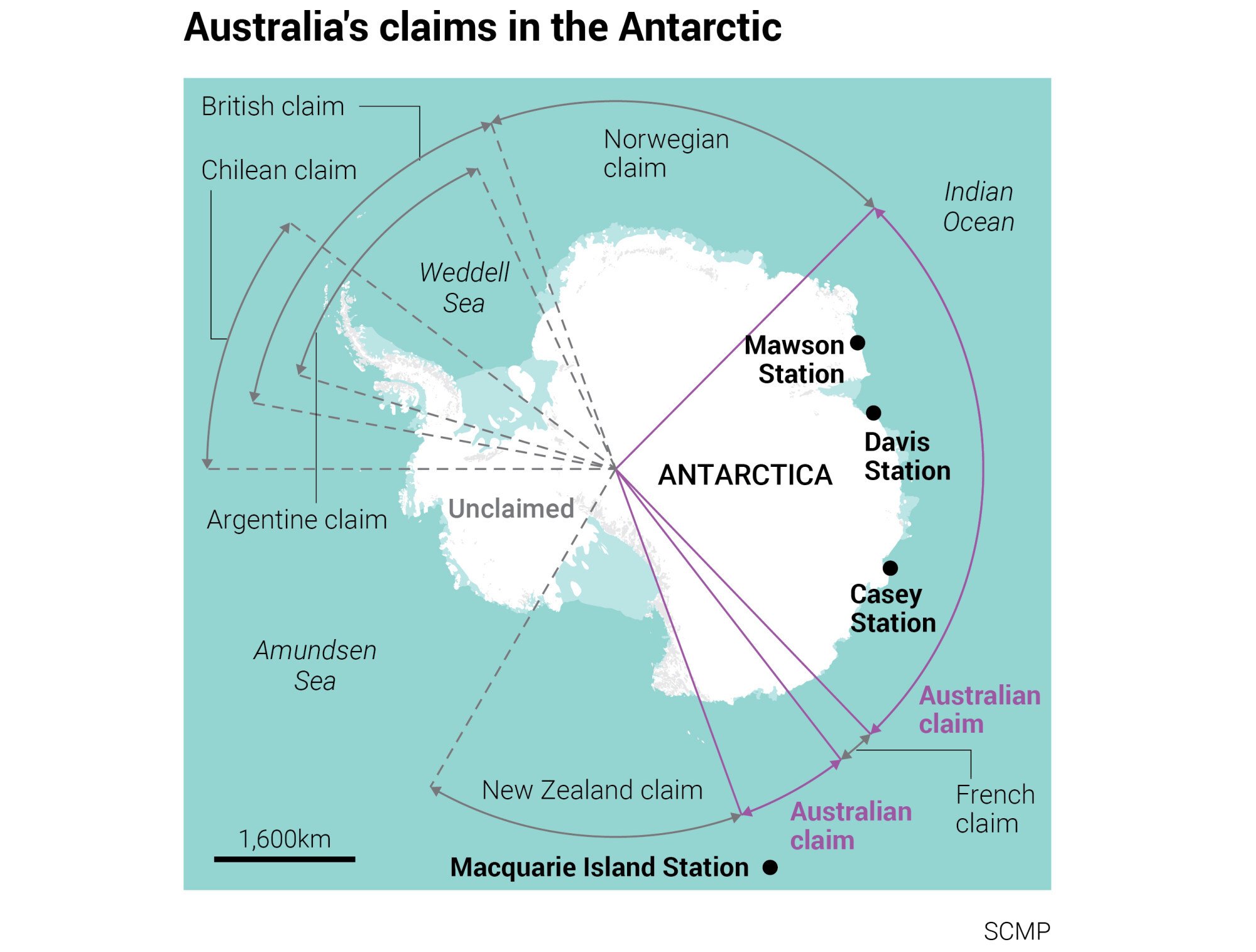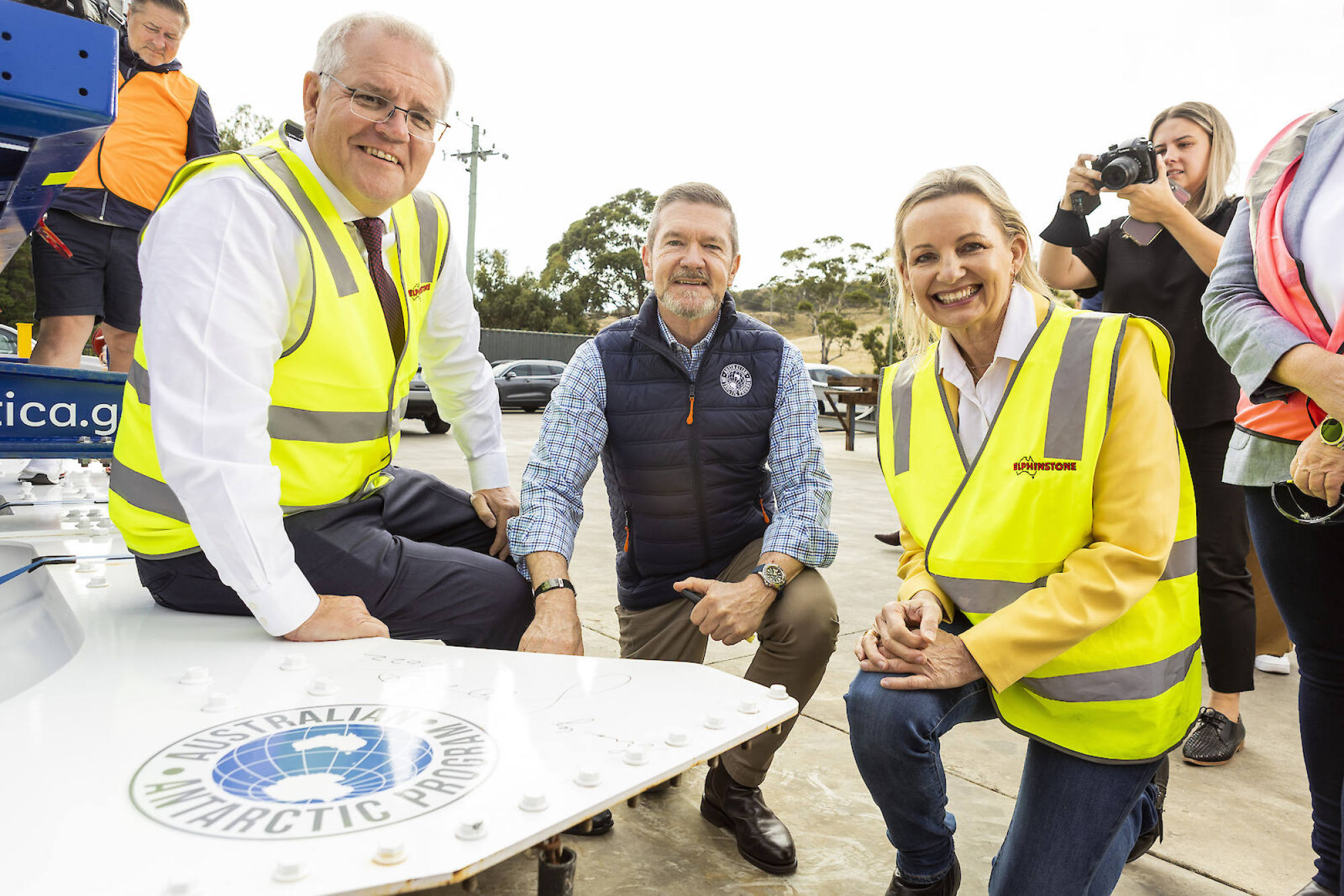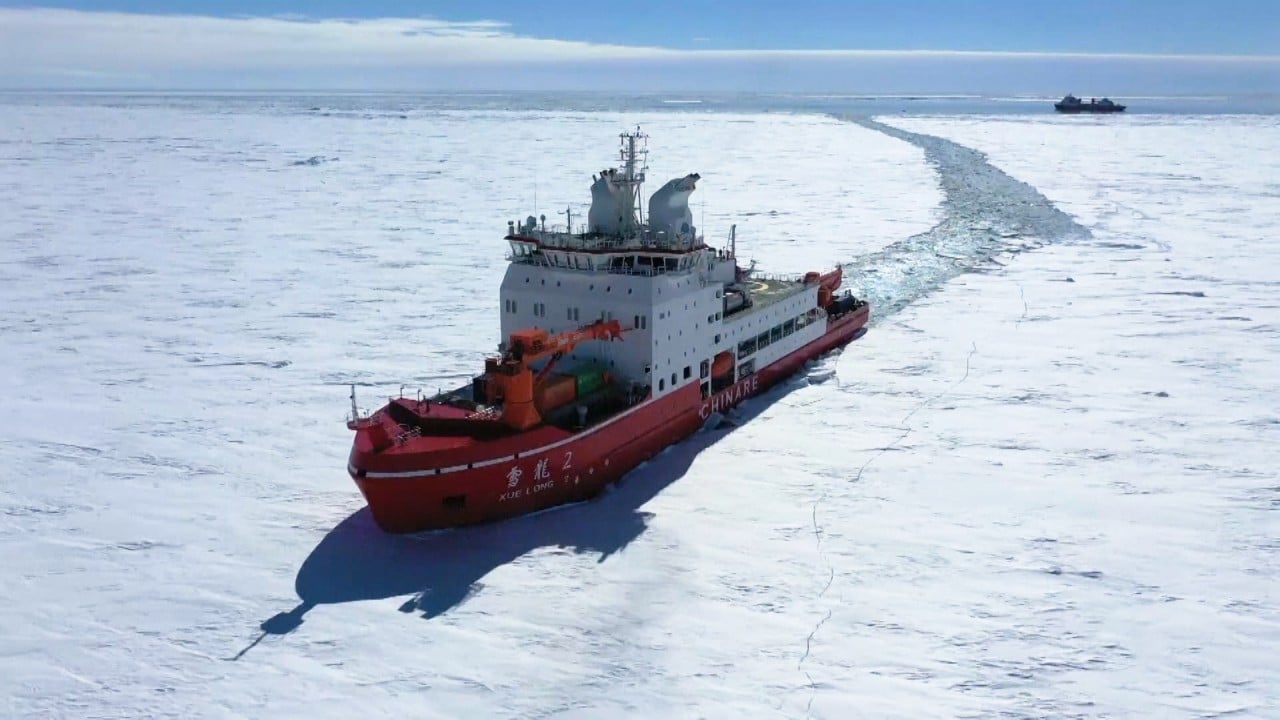
Is China a key motivation for Australia’s A$804 million Antarctica funding boost?
- Australia’s China critics believe so, but analysts say Canberra, which claims 42 per cent of the frozen continent, is making a long overdue investment in scientific research and environmental protection
- Chinese analysts have also framed Australia’s move in the context of the ongoing geopolitical competition and tense bilateral ties
In the past week, since Australia announced an A$804 million (US$578 million) to boost scientific research on Antarctica, its efforts have been framed as part of the ongoing competition for influence with China that stretches from the Indo-Pacific to the frozen continent.
This has been fuelled by comments Australian Prime Minister Scott Morrison made when he said the funding would be for more drone fleets, helicopters and other vehicles so that scientists could uncover parts of the unexplored East Antarctica.
Other investments include charting activities, mobile stations, support for science voyages and environmental programmes for a “Cleaner Antarctica Strategy”.

“[Science] research on the frozen continent and in the southern ocean is critically important to Australia’s future,” Morrison said in a statement. Historically, Australia has a 42 per cent sovereign claim over the continent, although this is recognised by just four sovereign states.
He added that Australia needed to “keep watch” on the region, as China did not share Australia’s objectives in Antarctica and that Beijing wanted to exploit its resources.
“We need to keep eyes on Antarctica because there are others who have different objectives to us, and we need to make sure – not just for Australia’s interest, but for the world’s interest – that we protect this incredible environment that we have responsibility for,” he said.

Environment Minister Sussan Ley later added that the funding would maintain the Antarctic as “a place of science and conservation, one that is free from conflict and which is protected from exploitation”.
The announcement comes as Australia’s hawkish political observers call for efforts to stamp out China’s presence in Antarctica’s icy south, as it grows more assertive in region, similar to its behaviour in the South China Sea. A week earlier, an Australian maritime patrol aircraft detected laser emanating from Chinese vessels sailing close to the Australian north coast.
These observers have also sounded warnings that the Cold War-era Antarctic Treaty System (ATS), that entered into force in 1961 among 12 countries – which includes Australia, China, the US and the then-Soviet Union – could fall apart exposing signatories such as Canberra.
The ATS freezes territorial claims in the south and ringfences Antarctica for peaceful use and science but there are concerns China’s increased pushing of ATS practices over fishery and tourism boundaries may eventually lead to its disintegration.
China to develop new heavy icebreaker for ‘Polar Silk Road’
Australia recently called off its environmentally controversial Davis Aerodrome project which involved building a paved runway near its permanent outpost, the Davis research station late last year. The move, while welcomed by environmental experts and analysts, prompted concerns Australia’s sovereignty claim to Antarctic might be jeopardised should China or Russia build over the abandoned aerodrome site.
With the largest sovereign claim over Antarctica, Australia has a strong voice at ATS meetings although it cannot stop other countries from building new infrastructure.
Given the protections afforded by the ATS, when asked what she meant over keeping Antarctica “free from conflict”, a spokesman for Australian environment minister Ley said it was important “Australia sends a clear signal of its commitment to scientific research and exploration”.
This new funding boost takes a different and pragmatic pathway … from the ‘compete or collaborate’ narrative
Macquarie University Associate Professor Nengye Liu noted that while China was not mentioned in the government’s announcement, the funding boost had been framed in the context of geopolitical competition.
“In combination with recent incidents of Chinese navy laser attack on RAAF plane in Australia’s exclusive economic zone, even Chinese media now believes that the new Antarctic funding boost is all about counterbalancing China’s expansion in the region,” he said.
China, a newcomer to the ATS in 1983, had been active in Antarctica including proposing upgrades to its Kunlun research station.

Liu said the funding was not unexpected or even targeted at any one country. Rather, it was part of a five-year update of the Australian Antarctic Strategy and 20-Year Action Plan to protects Australia’s national interests.
“I feel the Australian government was perhaps in a dilemma about finding the best way to maintain Australia’s leadership role or influence in the ATS. There are loud voices [for Australia] to compete with China,” Liu said.
“[But] I think the Australian government realised that building more strategic infrastructure could escalate the tension, damage its reputation of protecting Antarctica’s unique and vulnerable environment.”
“So, this new funding boost takes a different and pragmatic pathway … from the ‘compete or collaborate’ narrative,” said Liu, though he acknowledged that the research efforts and jobs under the funding served dual roles to balance Australia’s commitment to the ATS and also keep a rising China at bay.
‘Long-term underfunding’
For Donald R. Rothwell, a professor of international law at Australian National University, the new funding was an alternative investment given the cancelled Aerodrome project. It was also a top up of Australia’s “long-term underfunding” of its Antarctic programme.
“It needs to be understood that the new funding does not significantly enhance Australia’s presence in Antarctica. No new permanent Australian scientific bases are planned,” Rothwell said.
“To a degree, this announcement reflects funding for Australia to play ‘catch up’ to others and bring Australia’s Antarctic capability up to 2020/2030 standards; the drones, helicopters, and autonomous vehicles are examples of that enhanced capacity.”
The Arctic is not the South China Sea
Considered for 10 years before it was launched in 2018, Australia’s now scuppered Davis aerodrome “runway” project had come under criticism for its impact on the environment, and geopolitical implications. It also undermined Australia’s credibility and leadership in the ATS, which promoted environmental stewardship.
Former security analyst Claire Young, who worked with the Australian government for over 20 years, said the loss of the project underscored Australia’s vulnerability against China. It could torpedo Australia’s “influence” at ATS forums particularly if it, or other countries were to build their own runways, said Young.
At the same time, she cautioned that despite worries over China’s activities in the south including the use of alleged military equipment and alleged mining interests, fears of China posing a military threat in Antarctica were unfounded, Young said.
“Canberra should avoid overreacting to alarming public analyses of Chinese activities in Antarctica. Tensions over fisheries are real, but need not be viewed as geostrategic conflict,” she said.

Still Chinese analysts have cast doubts over Australia’s intentions.
Wang Peng, a research fellow at the Institute of State Governance in Huazhong University of Science and Technology in Wuhan, said while China’s interests in Antarctica were consistent with its position as a rising maritime power keen on expanding scientific research for global use, Australia’s latest funding was a camouflage for its own ambition of maintaining economic and military control over the region under the pretext of countering China.
“Among countries with sights on the region such as South Africa, Argentina and Australia, Canberra is the strongest in terms of capabilities and has good relations with the US through Aukus and Quad,” Wang added, referring to the trilateral and quadrilateral security arrangements which are seen as mechanisms to counter China.
“Australia sees itself as representing the interests and even serving as the spokesperson of the US and Anglo-Saxon countries not just in Antarctica, but also the South Pacific and southern hemisphere.”
9 staff infected with virus evacuated from Antarctic research base
Some countries such as Australia see Antarctica as their own backyard even though further expansion in the continent was unwarranted given their sizeable investments, Liu Zhiqin, a senior fellow from the Chongyang Institute for Financial Studies at the Renmin University of China in Beijing said.
Yet, these countries had “monopolised” the continent’s resources, and Australia in particular had sent drones and conducted naval operations under the guise of scientific research, Liu said.
“Morrison claimed that what he has done is for the global good, but this excuse has frequently been used by Australia as a pretext to walk in the footsteps of the US and UK in containing China and Russia,” Liu said.
“If Morrison really cares about the global good, he should stop Australia’s nuclear submarine programme and all non-scientific activities in the Antarctic such as unmanned aerial and reconnaissance activities.”
“By making itself responsible for environmental protection in the region, Australia could soon turn the Antarctic into its exclusive economic development zone,” Wang said.
The overarching ATS which prevented territorial claims has not deterred Australia from staking the region as its own, he added.



